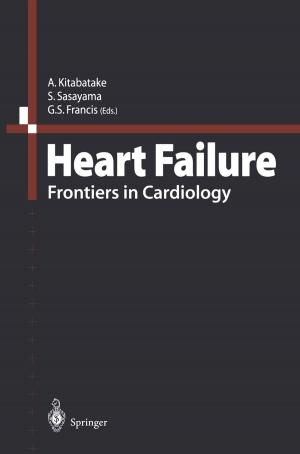Mechanosensing Biology
Nonfiction, Science & Nature, Science, Other Sciences, Molecular Biology, Health & Well Being, Medical, Medical Science, Physiology| Author: | ISBN: | 9784431897576 | |
| Publisher: | Springer Japan | Publication: | December 28, 2010 |
| Imprint: | Springer | Language: | English |
| Author: | |
| ISBN: | 9784431897576 |
| Publisher: | Springer Japan |
| Publication: | December 28, 2010 |
| Imprint: | Springer |
| Language: | English |
Mechanical stress is vital to the functioning of the body, especially for tissues such as bone, muscle, heart, and vessels. It is well known that astronauts and bedridden patients suffer muscle and bone loss from lack of use. Even the heart, in pumping blood, causes mechanical stress to itself and to vascular tissue. With the loss of mechanical stress, homeostasis becomes impaired and leads to pathological conditions such as osteopenia, muscle atrophy, and vascular tissue dysfunction. In elderly populations, such mechanical pathophysiology, as well as the mechanical activities of locomotor and cardiovascular systems, is important because skeletal and heart functions decline and cause diseases in other organs. In this monograph, mechanical stress is discussed by experts in the field with respect to molecular, cellular, and tissue aspects in relation to medicine. Covering topics such as gravity and tissues and disuse osteoporosis, the book provides the most up-to-date information on cutting-edge advancements in the field of mechanobiology and is a timely contribution to research into locomotor and circulatory diseases that are major problems in contemporary society.
Mechanical stress is vital to the functioning of the body, especially for tissues such as bone, muscle, heart, and vessels. It is well known that astronauts and bedridden patients suffer muscle and bone loss from lack of use. Even the heart, in pumping blood, causes mechanical stress to itself and to vascular tissue. With the loss of mechanical stress, homeostasis becomes impaired and leads to pathological conditions such as osteopenia, muscle atrophy, and vascular tissue dysfunction. In elderly populations, such mechanical pathophysiology, as well as the mechanical activities of locomotor and cardiovascular systems, is important because skeletal and heart functions decline and cause diseases in other organs. In this monograph, mechanical stress is discussed by experts in the field with respect to molecular, cellular, and tissue aspects in relation to medicine. Covering topics such as gravity and tissues and disuse osteoporosis, the book provides the most up-to-date information on cutting-edge advancements in the field of mechanobiology and is a timely contribution to research into locomotor and circulatory diseases that are major problems in contemporary society.















